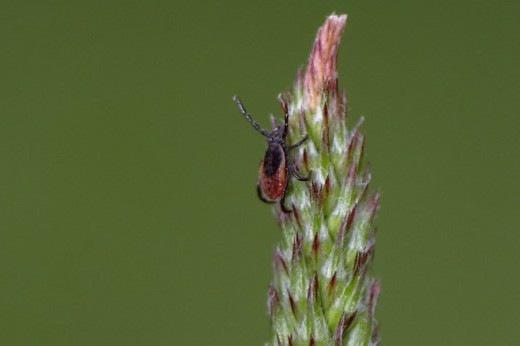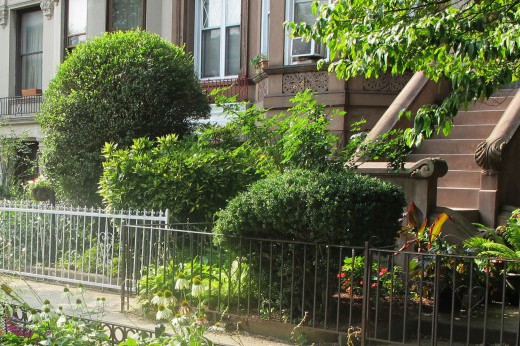Over the past few decades, plant damage caused by deer has risen to alarming levels in North American rural and suburban gardens. As a result, many homeowners feel they've no choice but to erect an ugly battery of defenses against invading herds. Where I live in Ohio, gardeners often quip that they have an interesting collection of fences, along with some great plants.
Why are we so besieged by deer? Well, it's our own fault. Clear-cutting for agriculture in the last century contributed to the disappearance of large predators and created ideal browsing habitat for deer, triggering a massive population explosion. Nowadays, the conversion of farmland into residential subdivisions is depriving deer of their traditional food sources. Inadequate culling measures in some states are exacerbating the situation.
Read More: Keeps Rats Out of Your Garden
But besides eradication through hunting and exclusion by fencing, what can a gardener do? Deploy repellents? In my experience, bags of human hair, bars of smelly soap, concentrated garlic products, and synthesized chemicals are only effective—and unreliably at that—when browsing pressure is very light.
There is another strategy: selecting plants that deer won't eat. However, here again we encounter problems. It can be difficult, for instance, to acquire some of these plants. Virtually every nursery in the country offers a nice selection of yews (Taxus), most of which happen to be relished by deer. But it's rare to find one that sells or knows anything about the plum yews (Cephalotaxus), an excellent group of plants that deer generally avoid.
Then there's the myth of the "deer-proof" plant. We simply cannot predict the behavior of hungry deer. These ruminants have complex nutritional needs. The more desperate they become, the more likely they are to shift their attention to plants avoided in the past. Such has been the case with the western red cedar (Thuja plicata), long hailed as a deer-proof evergreen but now on Bambi's bill of fare.
I prefer the moniker "deer-resistant." It doesn't signify a sure thing but rather a pretty good bet. The following is a list of deer-resistant woody plants that look very appetizing to us in the garden but not to roaming herds of deer. At least, not yet.
Pawpaw (Asimina triloba)
When the thick, pithy stem of a pawpaw is damaged, it emits a fetid odor—and this is probably what keeps the deer away. A large, multistemmed, suckering plant reaching up to 20 feet in height, the pawpaw is native from southern Ontario west to Nebraska and south to Florida. In the garden, it is most commonly used as an understory shrub. The pawpaw also adapts well to open sites, where it can grow into a tall, densely branched tree. It prefers a rich, moist, acid soil and is hardy from Zones 6 to 8.
The pawpaw adds an interesting boldness, an almost tropical look, to a garden. It has large, simple, mid-green leaves, 6 to 15 inches long, which turn a stunning yellow to coppery red in fall. Its cup-shaped, one to two inch purple flowers appear sparingly in mid-May. They develop into large, delicious berry-shaped fruits, which ripen in September to a yellow-brown color. The flesh of the fruit is comparable to that of banana in texture. Several pawpaw cultivars have been selected for their improved fruit quality: Asimina triloba 'Mitchell' and 'Overleese' have exceptionally large fruits that weigh close to a pound when ripe.
Boxwood Species (Buxus species)
In the garden, the genus Buxus is represented predominantly by three shrubby species—the common boxwood (B. sempervirens), littleleaf boxwood (B. microphylla), and Korean littleleaf boxwood (Buxus sinica var. insularis)—and their numerous hybrids and cultivars. Boxwoods retain excellent glossy green foliage year-round and bear tiny but extremely fragrant yellow-white flowers in late April and early May. They respond well to intense shearing and thus are most often used as hedges in formal settings. Left alone, they develop broadly conical shapes and make interesting specimen plantings. All perform well in dry, shady sites with fertile soil.
The common boxwood is native from southern Europe and northern Africa eastward to the Caucasus and Russia. Although less hardy (USDA Zones 6 to 8) than its Asiatic cousins, it has larger, glossier leaves. The straight species can reach up to 15 feet tall, but many distinct selections have emerged. You can choose from tight columnar forms such as 'Graham Blandy' and 'Angustifolia', or settle for low-growing groundcovers like 'Anderson' and 'Suffruticosa'. The dense, five-foot-tall, variegated cultivar 'Elegantissima' creates refreshing contrast in the landscape with its cream-yellow-margined leaves. The cultivars 'Asheville', 'Nela Park', and 'Pullman' are particularly hardy and useful for colder regions.
Japanese plum yew (Cephalotaxus harringtonia)
Native to Asia, the evergreen, coniferous plum yews (Cephalotaxus) closely resemble English and Japanese yews (Taxus). They have coarse, one to two inch needles that vary in color from medium to dark glossy green. On female plants, inch-long fleshy cones ripen in autumn from green to olive-brown, looking like small, downward-hanging plums. Plum yews can play much the same role as yews in our landscapes. They may be tightly clipped into attractive formal specimens or left to grow naturally into large, dense screens. As with the yews, they do well in dry, shady sites.
The surprisingly cold-hardy Japanese plum yew, C. harringtonia (Zones 6 to 9), has a lot of potential for northern gardens. The straight species can grow 20 feet tall, occasionally taking the form of a small tree. The cultivar 'Fastigiata' is a beautifully formal, broadly conical shrub growing to 15 feet. 'Prostrata', a spreading groundcover less than three feet tall, originated at Hillier's Nursery, in England, and is slowly becoming popular in the United States.
Oregon grapeholly (Mahonia aquifolium 'Compactum')
The genus Mahonia consists mainly of evergreen woody shrubs or shrubby groundcovers native to the western United States. A few species, such as the leatherleaf mahonia (M. bealei), are indigenous to Asia. Mahonias are grown for their glossy, spiny-margined foliage, their clusters of bright yellow, fragrant early-spring flowers, and their handsome blue-black berries, which ripen from late July to September. Mahonias are drought-tolerant and pest-free, but their cold-hardiness varies widely. Tender coastal species, such as the Fremont mahonia (M. fremontii), are hardy from Zones 8 to 10. The creeping mahonia (M. repens), on the other hand, makes its home in the subalpine regions of Montana and is best suited to Zone 4.
One of the features I like best about mahonias is the bronze-red color of their newly emerged leaves. It's particularly evident on M. aquifolium 'Compactum', a handsome dwarf form of the Oregon grapeholly. The plant grows between two and three feet tall, prefers a moderately fertile, moist but well-drained soil, and likes full sun to partial shade. It's hardy from Zones 5 to 9, perfect for cooler gardens in the North.
Black tupelo (Nyssa sylvatica)
Black tupelo is a premier shade tree valued for its pest resistance, dense branching habit, and excellent foliage. It grows from Ontario south to Florida and Texas, and west to Michigan and Wisconsin. I normally observe this tree in association with oaks (Quercus) on dry, upland sites, in slightly acid soils. But it will tolerate heavier, wetter soils as well. Hardy from Zones 5 to 9, it averages 30 to 50 feet in height; however, cultivated open-grown specimens will occasionally approach 100 feet tall. In youth, its habit is somewhat stiff and broadly conical. Older trees take on a more appealing rounded to flat-topped appearance.
Black tupelo's tiny greenish-white summer flowers and its small bluish-black fall fruits are nothing to write home about. Its foliage, however, has few rivals among woody plants. During summer, the plant's simple two to three inch leaves remain incredibly dark green and glossy. Their beauty intensifies with the arrival of fall, when they turn a mix of scarlet, orange, and yellow. A few selections of black tupelo have made their way onto the U.S. market. The cultivar 'Miss Scarlet' is valued for its exceptional fall color. 'Pendula' is a semi-weeping form that's been offered by specialty nurseries for many years. However, it is likely to be supplanted by the recently introduced 'Autumn Cascades', a rapid grower with a pronounced weeping habit and fine orange-red fall color.
More Deer-Resistant Trees and Shrubs
- Bald cypress (Taxodium species)
- Bayberry (Myrica species)
- Cinquefoil (Potentilla species)
- False cypress (Chamaecyparis species)
- Forsythia (Forsythia species)
- Fringe tree (Chionanthus species)
- Spirea (Spiraea species)
- Spruce (Picea species)
- White forsythia (Abelio-phyllum distichum)



